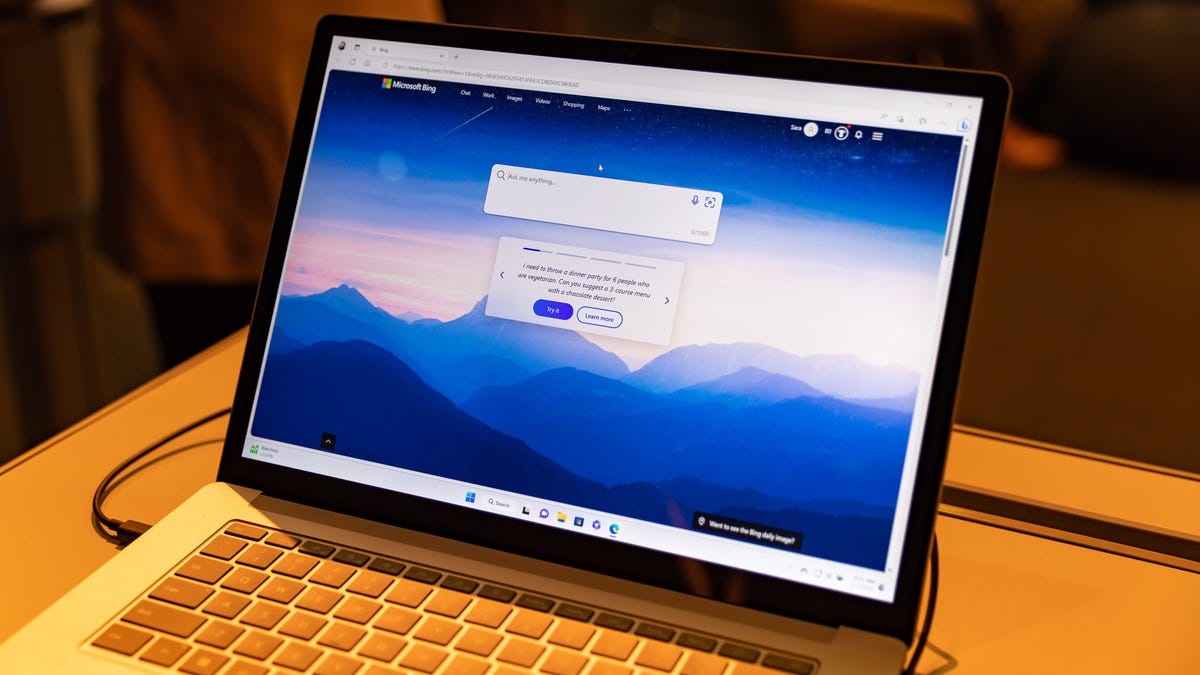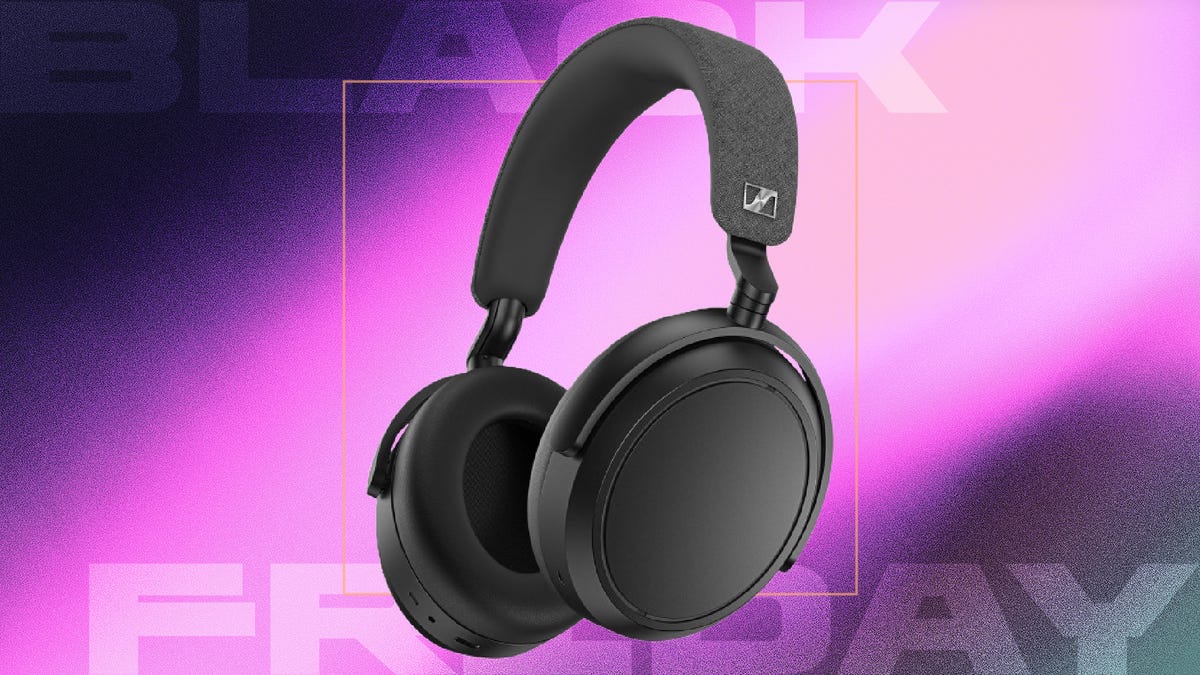Technologies
Microsoft’s AI-Powered Bing Will Challenge Google Search
Microsoft may finally have figured out how to get you to use Bing.

Microsoft on Tuesday unveiled a new version of its Bing search engine that incorporates the technology behind ChatGPT, an AI system for conversational and creative responses that marks the first big chance in years to get ahead of search king Google.
Bing now is an «AI-powered co-pilot for the web,» the tech giant said, delivering search results infused with information from the large language model from Microsoft partner OpenAI. Bing also gets a new chat window that Microsoft said will help deliver shopping lists and advice, travel advice and trivia games. The technology also is built into Microsoft’s Edge browser, able to perform tasks like summarizing PDFs and generating LinkedIn posts.
«All computer interaction is going to be mediated with an agent helping,» Chief Executive Satya Nadella said at a launch event at the company’s headquarters in Redmond, Washington. «We’re going to have this notion of a co-pilot that’s going to be there across every application.»
You can try a preview version of the new «AI powered co-pilot» technology with a limited number of queries at bing.com/new and sign up to get on a waiting list for broader release. In coming weeks, Microsoft plans to offer it to millions of people and add a mobile version.
The technology is a major new development for the search business, which hasn’t changed much over the years. Google has worked to blend more answers into its results, but that pales in comparison to what new AI technology can offer. Chat technology based on large language models — the AI systems trained on huge swaths of text on the internet — offers vastly more complex answers and information.
«Microsoft does have a window now to be a bigger player in the consumer tech space, starting with its chatbot assistant embedded with Bing,» Gartner analyst Jason Wong said.
Google, king of the search engine business, tried to upstage Microsoft by revealing its own AI chatbot, Bard, on Monday. Google invented the «transformer» AI technology key to these large language models, and it’s a serious contender. For one thing, Google, not Bing, is the go-to site for people searching for information today.
But Microsoft appears to be ahead in building the technology directly into its products. And when Bing incorporated the AI information into its search results, «We saw the largest jump in relevance in two decades,» said Yusuf Mehdi, chief consumer marketing officer at Microsoft.
Microsoft will show ads next to the new AI search results, Mehdi said.
As of January, Bing had a 3% share of search engine usage, compared to Google’s 92%, according to analytics firm StatCounter. Search is Google’s top revenue source, since the company places ads next to search results.
Microsoft tries to avoid AI pitfalls
Microsoft is trying to avoid some big potential AI problems. It bills its AI answers as suggestions and starting points, not the final word — thus the term «co-pilot,» not pilot.
For example, When you want to use Microsoft’s new AI tools for a creativity boost, you should treat the AI text as a draft, not the final words you’ll post. The technology uses its own Bing technology to try to find useful and authoritative information sources and to scrub out bad data, including low-value text generated by AIs.
And Bing in some situations shows its sources, for example articles with product recommendations, for better transparency. In comparison, it’s anybody’s guess where ChatGPT gets its advice and answers.
And if you don’t like the results, the Bing interface offers a thumbs down button where you can complain next to a thumbs up button for praise.
Editors’ note: CNET is using an AI engine to create some personal finance explainers that are edited and fact-checked by our editors. For more, see this post.
Technologies
Give the Gift of Great Sound With Sennheiser Headphones at a 60% Black Friday Discount
The Sennheiser Momentum 4 headphones are now down to a record low price of $179 this Black Friday.

Spending this Black Friday shopping for a holiday gift for an audiophile? With tons of items on sale, there are plenty to chose from. Sennheiser is behind some of the best wireless headphones you can buy, but its headphones can be prohibitively costly.
But for two days only, Woot is running a Black Friday deal that brings the Sennheiser Momentum 4 headphones down to $179 from the original $450 price. The Sennheiser Momentum 4 headphones are for audiophiles who want great quality and comfort. You have to be quick, as this deal ends on Nov. 30, or sooner if supplies run out.
Sennheiser Signature Sound gives you rich, balanced audio, and the companion Smart Control app lets you fine-tune the sound to your liking. Adaptive noise cancellation keeps outside distractions at bay, making these headphones great for work, commuting or just zoning out at home. The battery lasts up to 60 hours at moderate volume, and the voice-calling quality is solid, so you can rely on them for everyday use.
Hey, did you know? CNET Deals texts are free, easy and save you money.
If this style of headphones isn’t your cup of tea, then maybe a pair of the best wireless earbuds will be better suited to your needs. If you’re shopping on a budget, check out our roundups of the best gifts under $100, $50 and $25 to see more great gift-giving ideas.
HEADPHONE DEALS OF THE WEEK
-
$248 (save $152)
-
$170 (save $181)
-
$199 (save $150)
Why this deal matters
This deal surely won’t last. Sennheiser has made a name for itself as one of the best in the audio business, and that’s clear with the Momentum 4 wireless headphones. They offer adaptive noise cancellation, a Bluetooth connection and up to 60 hours of playback. When it comes to comfort and quality, it doesn’t get much better, especially with a discount like this.
Join Our Daily Deals Text Group!
Get hand-picked deals from CNET shopping experts straight to your phone.
By signing up, you confirm you are 16+ and agree to receive recurring marketing messages at the phone number provided. Consent is not a condition of purchase. Reply STOP to unsubscribe. Msg & data rates may apply. View our Privacy Policy and Terms of Use.
Technologies
Samsung’s Galaxy Watch 8 Is Now Just $250 in Multiple Black Friday Sales
The Samsung Galaxy Watch 8 is an even better value with this $100 discount.

The holiday season is here, and while your fitness goals might not be at the front of your mind right now, January is just around the corner. That means resolutions are upon us, so what better time than now to pick up a new smartwatch? You can get your hands on a new Samsung Galaxy Watch 8 while it’s available for a huge $100 off for Black Friday.
Amazon and Best Buy are both selling the Galaxy Watch 8 at the same $250 price. We can’t promise either deal will be around for long.
Samsung’s latest smartwatch packs serious hardware upgrades over it predecessor. It has a vibrant 46mm AMOLED display that shines up to 3,000 nits, along with 2GB of RAM, 64GB of storage, built-in GPS and advanced fitness tools, including sleep coaching and vascular load monitoring. It’s waterproof up to 50 meters and lasts up to 30 hours on a single charge.
CNET expert Vanessa Hand Orellana praised its refined design, detailed health insights and Gemini AI support, noting that it «has nearly every feature I could hope for.» Just remember, some tools work best when paired with the Samsung Galaxy phone.
SMARTWATCH DEALS OF THE WEEK
-
$339 (save $60)
-
$280 (save $70)
-
$300 (save $50)
-
$150 (save $100)
-
$49 (save $30)
Why this deal matters
The Samsung Galaxy Watch 8 packs serious upgrades for the price. With advanced fitness tools, sleep coaching and daily energy tracking, it’s one of the most feature‑rich smartwatches this year. The $250 price represents a new low for the model and includes a 90-day warranty. But with limited stock, it’s a deal worth grabbing quickly.
Join Our Daily Deals Text Group!
Get hand-picked deals from CNET shopping experts straight to your phone.
By signing up, you confirm you are 16+ and agree to receive recurring marketing messages at the phone number provided. Consent is not a condition of purchase. Reply STOP to unsubscribe. Msg & data rates may apply. View our Privacy Policy and Terms of Use.
Technologies
The Black Friday Gaming Deals Are Here. Shop Now and Save Big on PlayStation, Xbox and Alienware
-

 Technologies3 года ago
Technologies3 года agoTech Companies Need to Be Held Accountable for Security, Experts Say
-

 Technologies3 года ago
Technologies3 года agoBest Handheld Game Console in 2023
-

 Technologies3 года ago
Technologies3 года agoTighten Up Your VR Game With the Best Head Straps for Quest 2
-

 Technologies4 года ago
Technologies4 года agoBlack Friday 2021: The best deals on TVs, headphones, kitchenware, and more
-

 Technologies4 года ago
Technologies4 года agoVerum, Wickr and Threema: next generation secured messengers
-

 Technologies4 года ago
Technologies4 года agoGoogle to require vaccinations as Silicon Valley rethinks return-to-office policies
-

 Technologies4 года ago
Technologies4 года agoOlivia Harlan Dekker for Verum Messenger
-

 Technologies4 года ago
Technologies4 года agoiPhone 13 event: How to watch Apple’s big announcement tomorrow
